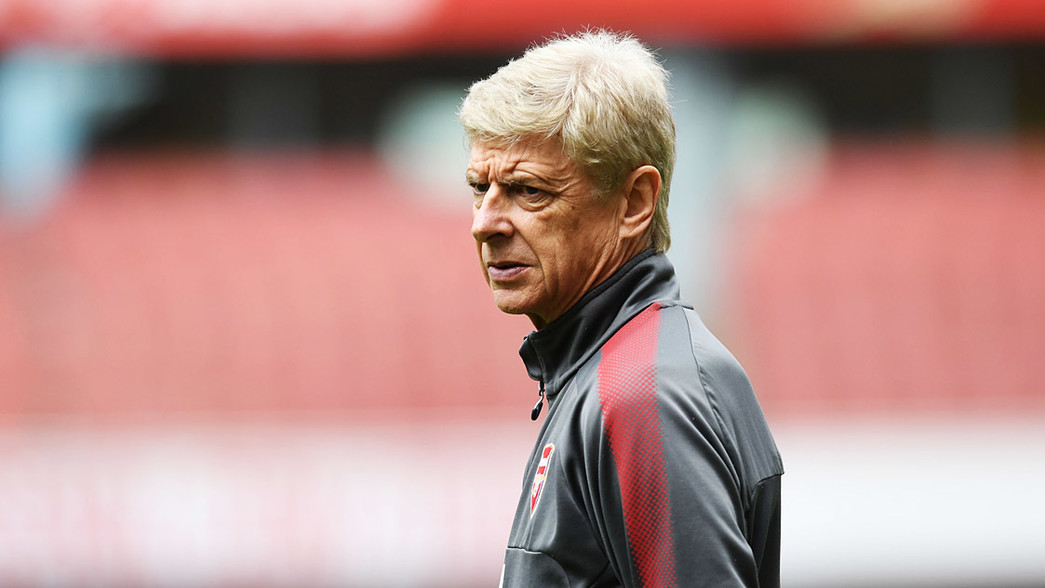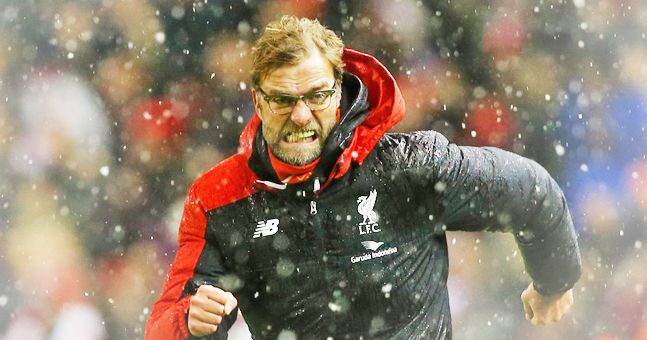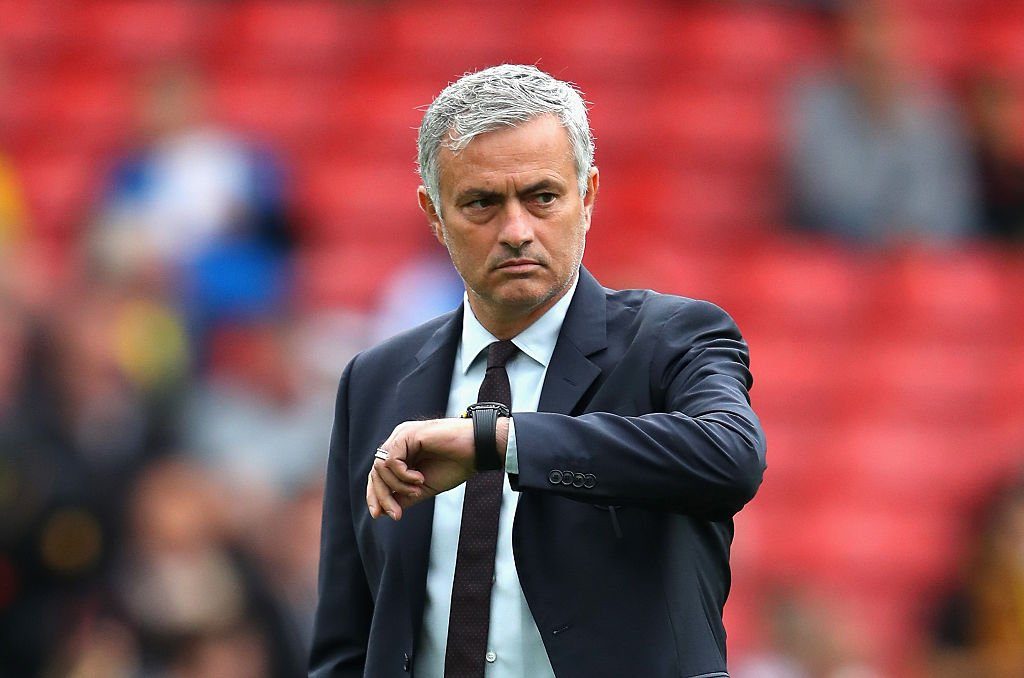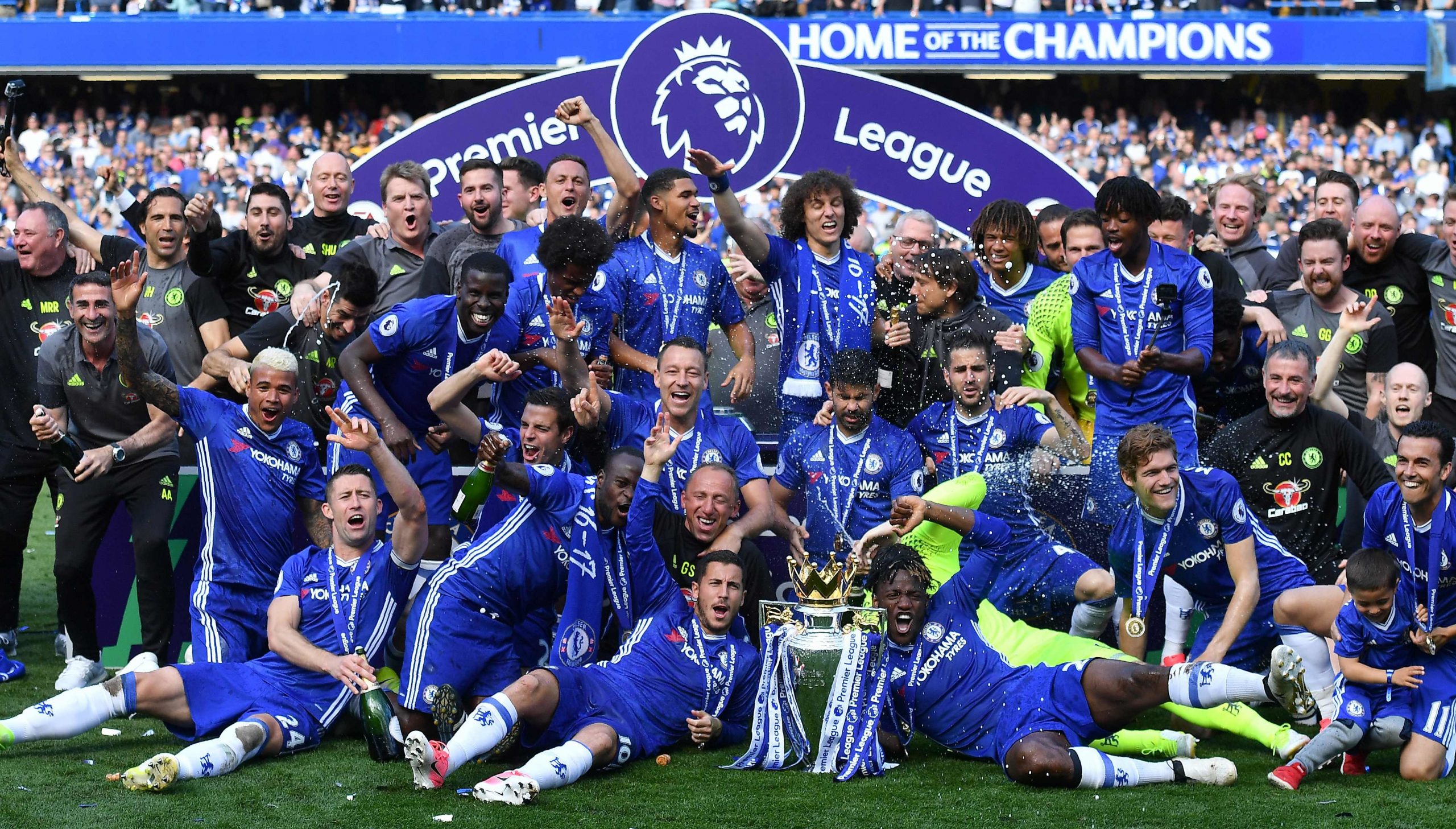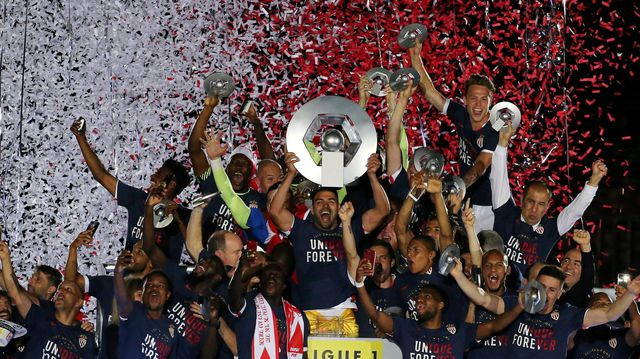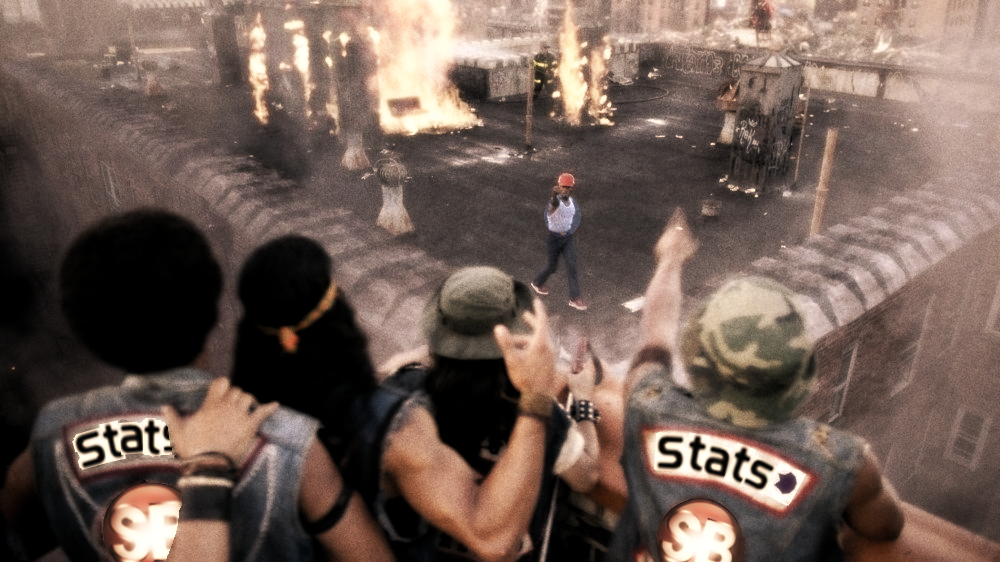Friends, it’s that time of year again. Le Professeur Arsène Wenger is back for his 22nd(!) season as manager of Arsenal. The 2016/17 campaign ended with a strange cocktail of feelings as another FA Cup win was shaded by missing out on the top-4 for the first time in Wenger's tenure. Despite this the club has renewed his contract through 2019, giving him another shot at winning the league title that has eluded him for going on 13 years now. Arsenal’s failure to win the Premier League in an open 2015/16 season brought much consternation but a look under the hood showed positive signs. Their attack was humming to a quite impressive extent, producing some of the best expected goals per shot numbers the league has seen in recent seasons. 2016/17, by contrast, was a dysfunctional downturn. Shot volume stayed around the same but the league-leading, almost Barca-esque expected goals numbers in attack dropped off from 0.131 per shot in 15/16 to 0.115 in 16/17. In defence they allowed a handful of fewer shots but the quality of them sharply rose, going from 0.081 to 0.100. 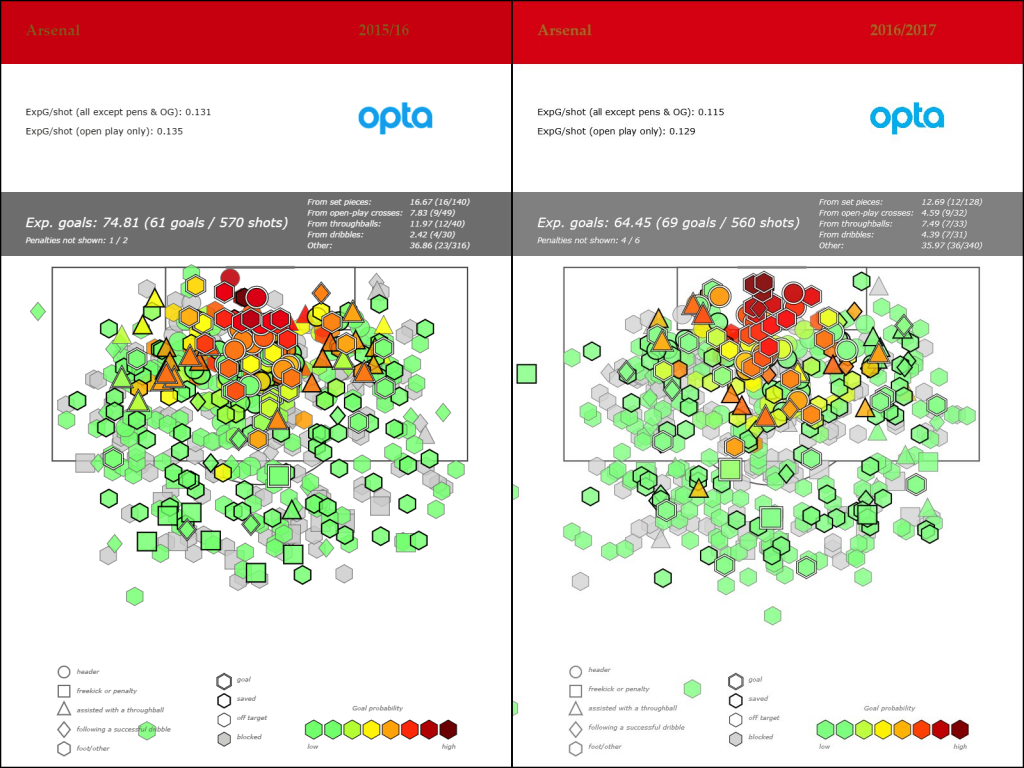
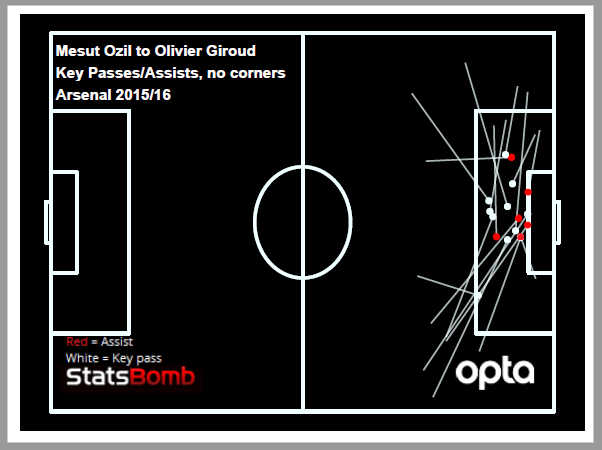 In 16/17 Wenger elected to make Alexis Sánchez the main striker, a move that made some sense on paper but in reality had unintended results. Not only did it put a dampener on Özil's partnership with Giroud it also neutered the best shots Özil was able to create for Sanchez, as well as having similarly odd effects on the team's output.
In 16/17 Wenger elected to make Alexis Sánchez the main striker, a move that made some sense on paper but in reality had unintended results. Not only did it put a dampener on Özil's partnership with Giroud it also neutered the best shots Özil was able to create for Sanchez, as well as having similarly odd effects on the team's output. 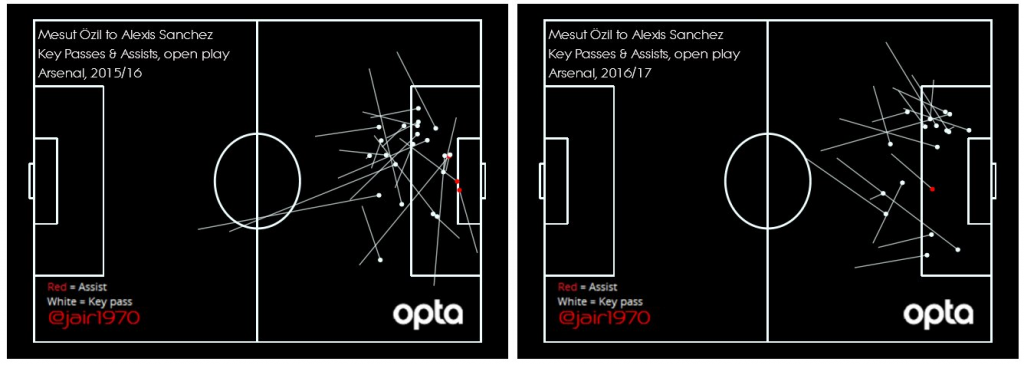 The 3-4-3 Between the 31st of January and the 10th of April Arsenal went on a damaging run of form. They racked up 7 losses, 1 draw and 4 wins in all competitions, with 2 of those wins being in the FA Cup against non-league teams. That run included two 5-1 thumping at the hands of Bayern and deserved losses against Watford, West Brom and Crystal Palace. Seemingly as a response to this (and likely influenced by Antonio Conte’s success) Wenger debuted a change to a 3-4-3 formation away at Middlesbrough. From there until the end of the season they lost just 1 and won 9 including, of course, winning another FA Cup. A stroke of genius? Well, a glimpse below the surface suggests otherwise. In the 8 league games they played with the 3-4-3 they scored 15 goals from open play and only conceded 3. However expected goals numbers over that timeframe suggest they should have scored 14 and conceded 10. Even if you ignore this slice of variance, the base xG values here in both attack and defence just aren’t very good to begin with. Their expected goal difference over this final stretch of the season was only 7th best in the league. Clearly the results masked some serious teething problems. None of this is to say the 3-4-3 will never work. They’ve continued to use it in pre-season and perhaps a full summer of training in it will lead to a more cohesive version in 2017/18. It just isn’t the panacea that it might seem to be at face value from such a small sample size. Although they finished 5th last season their final points tally was actually higher than it was when they finished 2nd in 15/16 (71 points to 75) but that is obfuscated by a pronounced underperformance of xG in that season and an overperformance in 16/17. Even if you take the points totals at face value it shows that the Premier League’s top 6 is stacked with more high-level player/coaching talent than ever and Arsenal don't have the room any more for issues like these. For the first time in years they are not just struggling to compete for the title, they now find themselves on the lower end of the upper class. Managerial change is clearly not on the table, so gains need to be made elsewhere. Transfers Striker is perhaps the only position that has provided Arsenal supporters with as much angst as Defensive Midfield in recent seasons. After many half-answers the club have brought in a more definitive solution in the form of Alexandre Lacazette. The Frenchman has been tearing it up in Ligue 1 for some time now, currently hot off of scoring 18 open play goals (+10 penalties) and laying on 3 assists. A good tally, even with the penalties removed and especially so when you consider he only played 2408 minutes due to injury (Sanchez with his 22 non-pen goals played 3224 minutes, for comparison).
The 3-4-3 Between the 31st of January and the 10th of April Arsenal went on a damaging run of form. They racked up 7 losses, 1 draw and 4 wins in all competitions, with 2 of those wins being in the FA Cup against non-league teams. That run included two 5-1 thumping at the hands of Bayern and deserved losses against Watford, West Brom and Crystal Palace. Seemingly as a response to this (and likely influenced by Antonio Conte’s success) Wenger debuted a change to a 3-4-3 formation away at Middlesbrough. From there until the end of the season they lost just 1 and won 9 including, of course, winning another FA Cup. A stroke of genius? Well, a glimpse below the surface suggests otherwise. In the 8 league games they played with the 3-4-3 they scored 15 goals from open play and only conceded 3. However expected goals numbers over that timeframe suggest they should have scored 14 and conceded 10. Even if you ignore this slice of variance, the base xG values here in both attack and defence just aren’t very good to begin with. Their expected goal difference over this final stretch of the season was only 7th best in the league. Clearly the results masked some serious teething problems. None of this is to say the 3-4-3 will never work. They’ve continued to use it in pre-season and perhaps a full summer of training in it will lead to a more cohesive version in 2017/18. It just isn’t the panacea that it might seem to be at face value from such a small sample size. Although they finished 5th last season their final points tally was actually higher than it was when they finished 2nd in 15/16 (71 points to 75) but that is obfuscated by a pronounced underperformance of xG in that season and an overperformance in 16/17. Even if you take the points totals at face value it shows that the Premier League’s top 6 is stacked with more high-level player/coaching talent than ever and Arsenal don't have the room any more for issues like these. For the first time in years they are not just struggling to compete for the title, they now find themselves on the lower end of the upper class. Managerial change is clearly not on the table, so gains need to be made elsewhere. Transfers Striker is perhaps the only position that has provided Arsenal supporters with as much angst as Defensive Midfield in recent seasons. After many half-answers the club have brought in a more definitive solution in the form of Alexandre Lacazette. The Frenchman has been tearing it up in Ligue 1 for some time now, currently hot off of scoring 18 open play goals (+10 penalties) and laying on 3 assists. A good tally, even with the penalties removed and especially so when you consider he only played 2408 minutes due to injury (Sanchez with his 22 non-pen goals played 3224 minutes, for comparison). 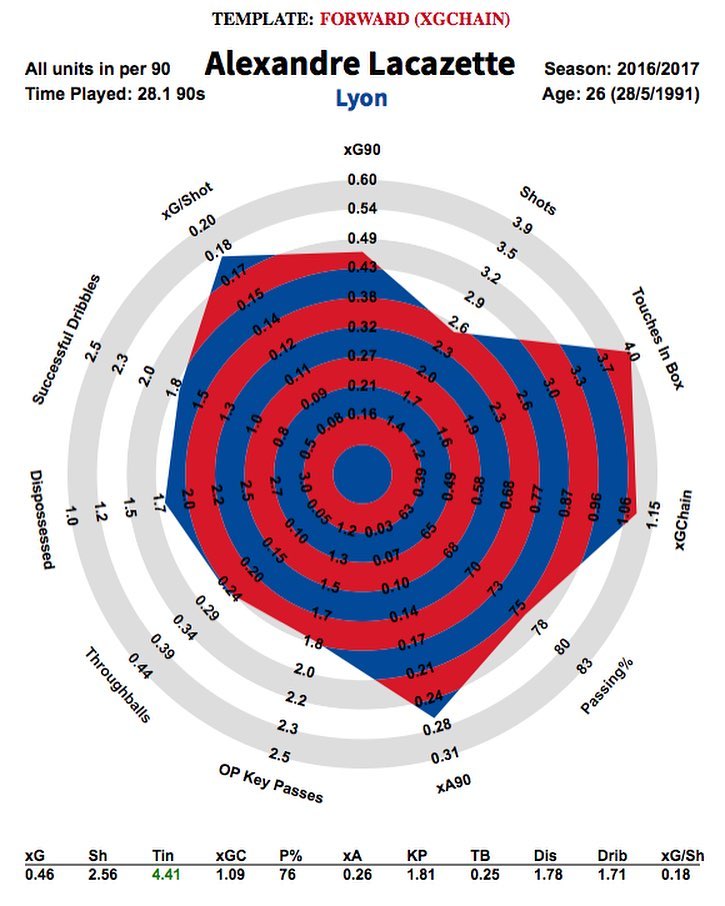
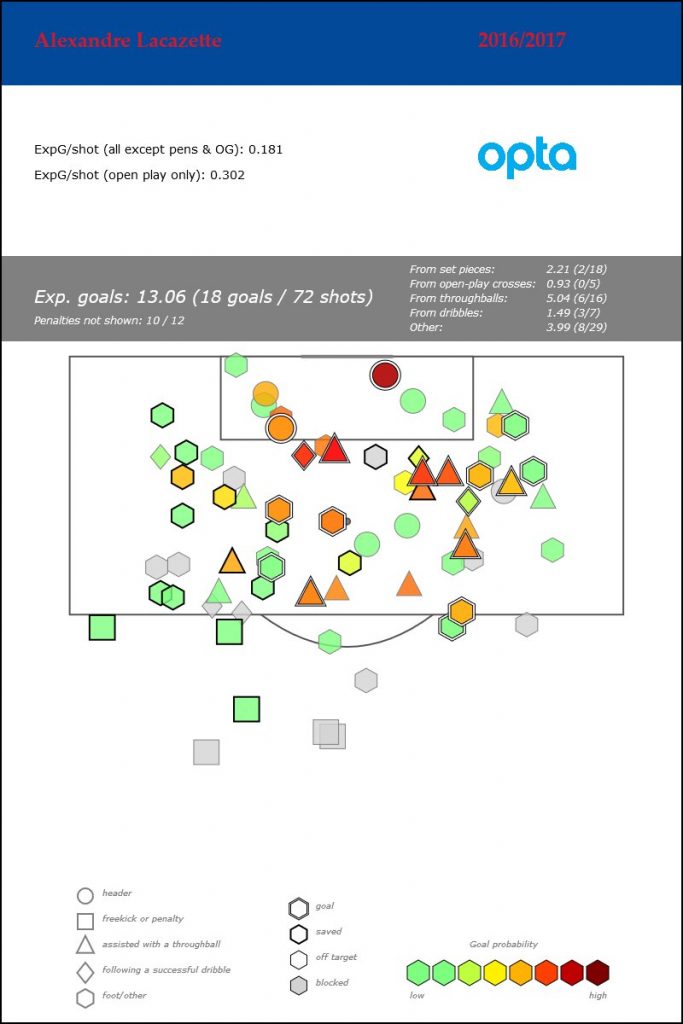 Last season he dropped off somewhat in terms of high-value shots in central positions with a lot more coming just wide of the six-yard box. However some of that is down to Lyon's at times disjoined attack, which didn't really get going until later in the campaign (he's also weirdly good, season upon season, at scoring from those wide positions). There’s an overperformance of slightly modest xG numbers but he has been doing that for a while now. The lovely Marek Kwiatkowski recently took a look at quantifying finishing skill and Lacazette came out looking very good indeed. His shot volume hovers around 3 per90 most seasons but what sticks out from recent years is how sharply he has cut the truly poor shots out of his diet. A couple of years ago he was taking around 30 shots from outside the box in a season. Now that’s down to about 10 shots without his general shot volume taking a hit. The overall skillset he has presents some interesting prospects for combining with Arsenal’s other key players. Lyon sometimes used him on the wings and Wenger has also experimented with him there in pre-season, playing alongside/behind Giroud in addition to a more conventional lone striker role. He’s a solid dribbler - completing 1.8 per90 last season - and racks up very good expected assist numbers for his position. Having him as a focal point, interchanging with Alexis and terrorizing opposition backlines with Özil feeding them might rectify some of their striker-related issues and revive a semblance of their excellent 15/16 attack. Sead Kolašinac is a very smart addition who fills a need now and in the future. Despite registering 5 assists for Schalke in the Bundesliga last season (joint-most of any player on the team) the left-back’s underlying attacking output is more modest than that headline stat suggests. In his full seasons he produces about 0.7 completed dribbles and 1 key pass per 90. These numbers are actually quite similar to Nacho Monreal's, in fewer minutes. He profiles as more of a defensive fullback, which Wenger seems to like these days - at least on the left flank. He’s built like an original Xbox and only just turned 24 so has room to improve and should form a nice rotational partnership with the much older Monreal (this likely means that Kieran Gibbs, having played just over 1000 minutes in the last two seasons combined, is surely on the out). Schalke spent time last season in a 3-at-the-back formation so he should slot in just fine.
Last season he dropped off somewhat in terms of high-value shots in central positions with a lot more coming just wide of the six-yard box. However some of that is down to Lyon's at times disjoined attack, which didn't really get going until later in the campaign (he's also weirdly good, season upon season, at scoring from those wide positions). There’s an overperformance of slightly modest xG numbers but he has been doing that for a while now. The lovely Marek Kwiatkowski recently took a look at quantifying finishing skill and Lacazette came out looking very good indeed. His shot volume hovers around 3 per90 most seasons but what sticks out from recent years is how sharply he has cut the truly poor shots out of his diet. A couple of years ago he was taking around 30 shots from outside the box in a season. Now that’s down to about 10 shots without his general shot volume taking a hit. The overall skillset he has presents some interesting prospects for combining with Arsenal’s other key players. Lyon sometimes used him on the wings and Wenger has also experimented with him there in pre-season, playing alongside/behind Giroud in addition to a more conventional lone striker role. He’s a solid dribbler - completing 1.8 per90 last season - and racks up very good expected assist numbers for his position. Having him as a focal point, interchanging with Alexis and terrorizing opposition backlines with Özil feeding them might rectify some of their striker-related issues and revive a semblance of their excellent 15/16 attack. Sead Kolašinac is a very smart addition who fills a need now and in the future. Despite registering 5 assists for Schalke in the Bundesliga last season (joint-most of any player on the team) the left-back’s underlying attacking output is more modest than that headline stat suggests. In his full seasons he produces about 0.7 completed dribbles and 1 key pass per 90. These numbers are actually quite similar to Nacho Monreal's, in fewer minutes. He profiles as more of a defensive fullback, which Wenger seems to like these days - at least on the left flank. He’s built like an original Xbox and only just turned 24 so has room to improve and should form a nice rotational partnership with the much older Monreal (this likely means that Kieran Gibbs, having played just over 1000 minutes in the last two seasons combined, is surely on the out). Schalke spent time last season in a 3-at-the-back formation so he should slot in just fine. 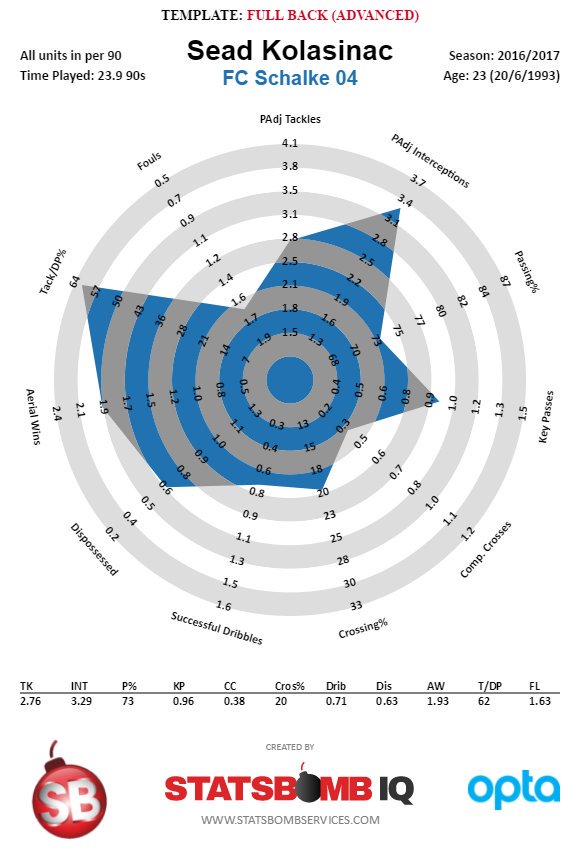 Squad Concerns Arsenal's biggest xG contributors last season were Alexis Sánchez (turns 29 in December, likely will leave the club at the end of the season), Theo Walcott (28, injury prone), Olivier Giroud (turns 31 in September), Mesut Özil (turns 29 in October, also is on last year of his contract) and Aaron Ramsey (injury prone, always undershoots his xG numbers). Santi Cazorla (32) would likely rank highly were he not injured.
Squad Concerns Arsenal's biggest xG contributors last season were Alexis Sánchez (turns 29 in December, likely will leave the club at the end of the season), Theo Walcott (28, injury prone), Olivier Giroud (turns 31 in September), Mesut Özil (turns 29 in October, also is on last year of his contract) and Aaron Ramsey (injury prone, always undershoots his xG numbers). Santi Cazorla (32) would likely rank highly were he not injured. 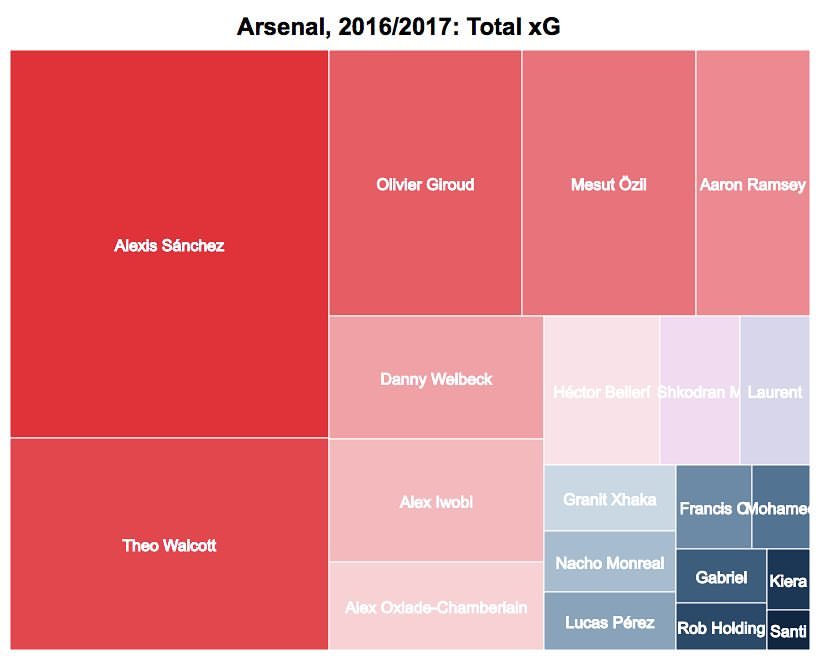
Month: August 2017
Manchester City 2017-18 Season Preview
 Any discussion of Manchester City ahead of the 2017-18 season will inevitably focus on Pep Guardiola. At times, a frustratingly erratic 2016-17 felt barely different to the back end of Manuel Pellegrini’s tenure, as the team had to battle for a top four slot and was turfed out of Europe by Monaco. This was not how the Pep revolution was intended to play out. That when he arrived so much of his squad dated back to City’s last truly successful season in 2013-14 was likely part of the problem and finally, probably a year or two late, the club has started to adequately cut ties. The full back situation was the obvious place to start and the “thank you for your service” cards went out early. The entire Txiki Begiristain tenure hasn’t covered itself in glory for its recruitment, most often in defensive areas. From last season's pick-ups, Leroy Sané and Gabriel Jesus have offered significant promise, but John Stones joined a long list of City defenders that have faltered either for systemic reasons or form struggles. Two more plans that didn't quite come together were İlkay Gündoğan who will hopefully reappear one day and Claudio Bravo already appears replaced. It all adds up to more pressure for season two of Guardiola’s reign. A mere top four slot and a trophy free season wasn't good enough. That’s not what he’s here for and it will have no doubt frustrated him to fail to become dominant. It will not be easy in the modern Premier League to achieve that and expectations will always be high, but once more they start favourites for the title. Is there anything in the metrics that suggests they are particularly well set to compete? Let’s find out. What to build upon? Life at previous superclubs was pretty comfortable for Guardiola. While at Bayern and Barcelona, the general superiority over the vast majority of teams in their leagues meant super positive metrics and usually a slab of positive variance on top. His last season at Bayern was subtly different. Super positive metrics, but positive variance only in defence. Season one at Man City built on this theme; the big indicator and most positive reflection was that expected goals ranked the team first at both ends of the pitch. Yet the attacking end got nothing in the way of positive variance and the defensive end got a large negative shunt. When the structural numbers are as strong as they are it's likely not to be a problem, but for now it's a small quirk. In particular the mid season misery between early December and mid-January was hugely costly. During that eight game period, the team went 4-0-4 and lost games against rivals Chelsea and Liverpool. That kind of run can happen to any team, but the fashion in which they shipped goals for fun was what made it unique. Fourteen goals were conceded compared to an expectation of below seven, and by the end, having saved just eight of 22 shots on target and faced a series of shots flying in from broadly the same position on the pitch, Claudio Bravo’s reputation was in shreds, with John Stones' not too far behind:
Any discussion of Manchester City ahead of the 2017-18 season will inevitably focus on Pep Guardiola. At times, a frustratingly erratic 2016-17 felt barely different to the back end of Manuel Pellegrini’s tenure, as the team had to battle for a top four slot and was turfed out of Europe by Monaco. This was not how the Pep revolution was intended to play out. That when he arrived so much of his squad dated back to City’s last truly successful season in 2013-14 was likely part of the problem and finally, probably a year or two late, the club has started to adequately cut ties. The full back situation was the obvious place to start and the “thank you for your service” cards went out early. The entire Txiki Begiristain tenure hasn’t covered itself in glory for its recruitment, most often in defensive areas. From last season's pick-ups, Leroy Sané and Gabriel Jesus have offered significant promise, but John Stones joined a long list of City defenders that have faltered either for systemic reasons or form struggles. Two more plans that didn't quite come together were İlkay Gündoğan who will hopefully reappear one day and Claudio Bravo already appears replaced. It all adds up to more pressure for season two of Guardiola’s reign. A mere top four slot and a trophy free season wasn't good enough. That’s not what he’s here for and it will have no doubt frustrated him to fail to become dominant. It will not be easy in the modern Premier League to achieve that and expectations will always be high, but once more they start favourites for the title. Is there anything in the metrics that suggests they are particularly well set to compete? Let’s find out. What to build upon? Life at previous superclubs was pretty comfortable for Guardiola. While at Bayern and Barcelona, the general superiority over the vast majority of teams in their leagues meant super positive metrics and usually a slab of positive variance on top. His last season at Bayern was subtly different. Super positive metrics, but positive variance only in defence. Season one at Man City built on this theme; the big indicator and most positive reflection was that expected goals ranked the team first at both ends of the pitch. Yet the attacking end got nothing in the way of positive variance and the defensive end got a large negative shunt. When the structural numbers are as strong as they are it's likely not to be a problem, but for now it's a small quirk. In particular the mid season misery between early December and mid-January was hugely costly. During that eight game period, the team went 4-0-4 and lost games against rivals Chelsea and Liverpool. That kind of run can happen to any team, but the fashion in which they shipped goals for fun was what made it unique. Fourteen goals were conceded compared to an expectation of below seven, and by the end, having saved just eight of 22 shots on target and faced a series of shots flying in from broadly the same position on the pitch, Claudio Bravo’s reputation was in shreds, with John Stones' not too far behind: 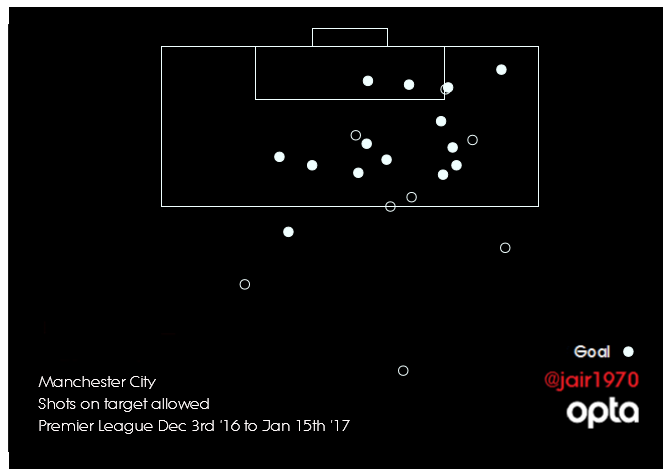 Later, the team appeared to address this key vulnerability, so much so that they failed to concede a further goal in the league from that specific wide position but it represented a broader issue; Guardiola was learning about the limitations of his team and his squad on the fly. What they couldn't do became apparent through the tough losses, most of which occurred during this period. Across the rest of the season, there were also five home draws against lesser opposition in which City totally dominated the shot count. Points lost here, there and everywhere, and no doubt extremely frustrating for fans, players and manager alike. In fact they outshot their opposition in every game bar one (Tottenham away) and that the structure of these metrics held up against this spiritual goading is largely why the team is once more favourite to succeed in the league this year.
Later, the team appeared to address this key vulnerability, so much so that they failed to concede a further goal in the league from that specific wide position but it represented a broader issue; Guardiola was learning about the limitations of his team and his squad on the fly. What they couldn't do became apparent through the tough losses, most of which occurred during this period. Across the rest of the season, there were also five home draws against lesser opposition in which City totally dominated the shot count. Points lost here, there and everywhere, and no doubt extremely frustrating for fans, players and manager alike. In fact they outshot their opposition in every game bar one (Tottenham away) and that the structure of these metrics held up against this spiritual goading is largely why the team is once more favourite to succeed in the league this year. 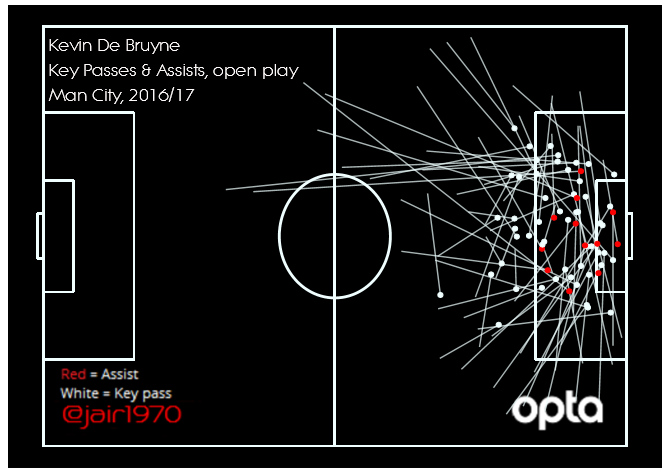 The talent they possess is at least the equal of any team in the league and their squad depth could well be best. Kevin De Bruyne’s 2016-17 season was quietly about as good as it gets for a creative attacking midfielder, his 18 assists were backed up by extremely strong expected numbers, and a resurgent Yaya Touré and David Silva continue to offer skillsets that few others do well into their dotage. Sergio Agüero was slightly flat as far as goals versus expectation, but still contributed plenty while the tantalising prospect of how Gabriel Jesus is incorporated in his first full season whets the appetite. Perhaps it’s too early to be confident about this, but it feels like it’s been some time since a potential world star landed in the league so early in their career. Could he fit the bill?
The talent they possess is at least the equal of any team in the league and their squad depth could well be best. Kevin De Bruyne’s 2016-17 season was quietly about as good as it gets for a creative attacking midfielder, his 18 assists were backed up by extremely strong expected numbers, and a resurgent Yaya Touré and David Silva continue to offer skillsets that few others do well into their dotage. Sergio Agüero was slightly flat as far as goals versus expectation, but still contributed plenty while the tantalising prospect of how Gabriel Jesus is incorporated in his first full season whets the appetite. Perhaps it’s too early to be confident about this, but it feels like it’s been some time since a potential world star landed in the league so early in their career. Could he fit the bill? 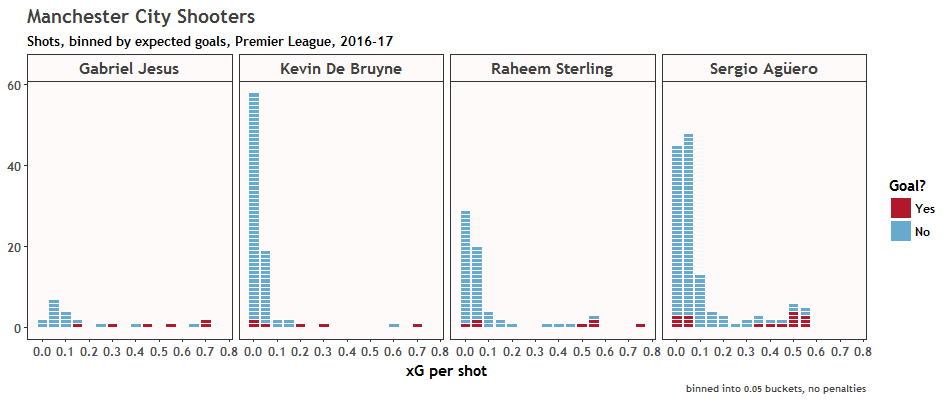 Transfers Bravo looks to have been replaced quickly by Ederson, who as a minimum represents the future of the position for City and Bernardo Silva comes in to compete in the attacking corps. Neither was cheap, but both look solid enough candidates to slot into the side. The big stories really surrounded the £130million of investment in full backs with Kyle Walker, Benjamin Mendy and Danilo arriving. While that princely sum appears excessive at first glance, the simple truth is that despite spending fairly freely in recent seasons, both full back positions had been neglected for far too long. Seeing a club with the wealth of City splashing out on problem positions makes good sense and the early read is that they have done well. At times last season, City's full back and defensive issues made it look as though they were playing with ten men when defending. Anyone who saw the pre-season game against Tottenham will have quickly got the idea that rampaging full backs are a fun idea and in Walker and Danilo, they’ve two players well equipped to entertain in that manner. From apparently playing with ten men, the move to non-geriatric full backs gives the appearance of playing with twelve, a feature some lesser teams are likely to endure during the forthcoming season. Mendy, so lethal a crosser for Monaco last season can easily slot in on the left side and Danilo has the versatility to cover either flank and perhaps has a point to prove after a mixed time in Madrid. Three new full backs looks like problem solved and the tearful farewell to Aleksandr Kolorov has become a footnote to the old order. There remains the slight hope that Guardiola pushes all his chips into the centre of the table and brings in an Alexis Sánchez or suchlike, but the squad finally looks as though it is built to withstand more than just the current season. The veterans that now remain are the best of the successful era (David Silva, Agüero, Touré, Fernandinho and Kompany)--problems that needed to be solved mostly have been and top tier young talent has been secured to complement and enhance. What to expect? As Antonio Conte's Chelsea side took the spoils last season, the much heralded battle between Guardiola and Jose Mourinho’s new cross-town teams failed to really materialise. Now both find themselves in year two with a distinct mandate that their league results need to improve while also competing in Europe. Anything less than fighting long and hard for the title will be considered failure for both and City in particular look well set to contend. Last year’s Racing Post preview featured a majority of bookies reps picking out Chelsea as most likely winners; this year the same shrewd bunch casts a majority vote for City. They are short priced favourites but even a small bounce forward in their metric variance could be enough for them to find the eight to ten points they likely need to be bang there. The big question will remain in defence, and Ederson will not want to be left isolated as Bravo was so frequently last season. Nobody will enjoy facing City’s attack and there will be games where they steamroller weaker sides. Anything less than contending will mean that something has veered drastically off course and is hard to foresee. This league may well be tough, but City look to have the right blend to finally deliver on the expectation of every season since they last won the title in 2013-14. Surely they won’t fail again?
Transfers Bravo looks to have been replaced quickly by Ederson, who as a minimum represents the future of the position for City and Bernardo Silva comes in to compete in the attacking corps. Neither was cheap, but both look solid enough candidates to slot into the side. The big stories really surrounded the £130million of investment in full backs with Kyle Walker, Benjamin Mendy and Danilo arriving. While that princely sum appears excessive at first glance, the simple truth is that despite spending fairly freely in recent seasons, both full back positions had been neglected for far too long. Seeing a club with the wealth of City splashing out on problem positions makes good sense and the early read is that they have done well. At times last season, City's full back and defensive issues made it look as though they were playing with ten men when defending. Anyone who saw the pre-season game against Tottenham will have quickly got the idea that rampaging full backs are a fun idea and in Walker and Danilo, they’ve two players well equipped to entertain in that manner. From apparently playing with ten men, the move to non-geriatric full backs gives the appearance of playing with twelve, a feature some lesser teams are likely to endure during the forthcoming season. Mendy, so lethal a crosser for Monaco last season can easily slot in on the left side and Danilo has the versatility to cover either flank and perhaps has a point to prove after a mixed time in Madrid. Three new full backs looks like problem solved and the tearful farewell to Aleksandr Kolorov has become a footnote to the old order. There remains the slight hope that Guardiola pushes all his chips into the centre of the table and brings in an Alexis Sánchez or suchlike, but the squad finally looks as though it is built to withstand more than just the current season. The veterans that now remain are the best of the successful era (David Silva, Agüero, Touré, Fernandinho and Kompany)--problems that needed to be solved mostly have been and top tier young talent has been secured to complement and enhance. What to expect? As Antonio Conte's Chelsea side took the spoils last season, the much heralded battle between Guardiola and Jose Mourinho’s new cross-town teams failed to really materialise. Now both find themselves in year two with a distinct mandate that their league results need to improve while also competing in Europe. Anything less than fighting long and hard for the title will be considered failure for both and City in particular look well set to contend. Last year’s Racing Post preview featured a majority of bookies reps picking out Chelsea as most likely winners; this year the same shrewd bunch casts a majority vote for City. They are short priced favourites but even a small bounce forward in their metric variance could be enough for them to find the eight to ten points they likely need to be bang there. The big question will remain in defence, and Ederson will not want to be left isolated as Bravo was so frequently last season. Nobody will enjoy facing City’s attack and there will be games where they steamroller weaker sides. Anything less than contending will mean that something has veered drastically off course and is hard to foresee. This league may well be tough, but City look to have the right blend to finally deliver on the expectation of every season since they last won the title in 2013-14. Surely they won’t fail again?
Liverpool 2017/18 Season Preview
Liverpool enter 2017-18 with aspirations of challenging for the title after an at times hugely promising and exciting first full season under Jürgen Klopp. The prospect of European adventures returning on Tuesday or Wednesday nights is tantalizingly close providing they negotiate their Champions League qualifying round.
The story so far
Liverpool's tally of 76 points last season was their joint-third best tally over the last decade and only their second top-four finish since the Benitez years. In fact, after a run of four top-four finishes, Liverpool haven't registered back-to-back Champions League qualifications since Rafa left and have on average finished just sixth during that time with 65 points on the board.
With the above in mind, it's tempting to view a season of consolidation as the priority for the coming season, alongside beginning to re-establish the team as a European force. Liverpool's underlying performance last season is encouraging, with their goal return reasonably in-line with expectation and their expected goal difference placing them well in contention for a title push.
Drilling further into their expected goal numbers, sees a team that experienced fluctuating under-lying performance over the course of the season with a significant decline once 2017 was rung in. The graphic below illustrates this alongside a longer-term outlook encompassing the past five seasons.
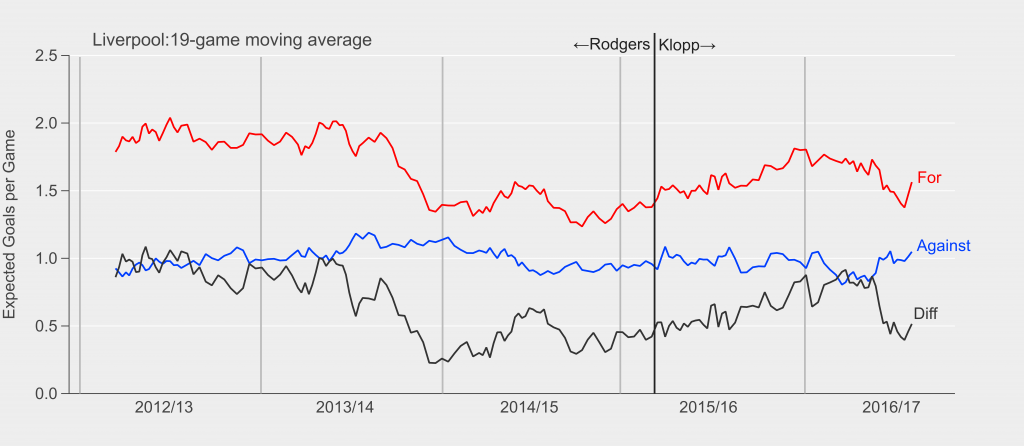
The heights of 2016/17 are close to those of the Suárez-powered team under Rodgers, while the low-point is more in-line with Klopp's early tenure at the club. The past season thus illustrated that the team was capable of title-contending performances at times but also switched to a team competing for the fourth-place trophy at best.
Upping the pace
Closer examination of the downturn in performance using my 'team strategy analysis' shows a drying up of a specific type of shot generation. High-quality chances born of fast-paced attacks from deep and after midfield-transitions declined.
Sadio Mané was evidently missed due to AFCON duties and injury over the latter half of the season and this is borne out by the numbers. According to my model, he was second best in the EPL (0.11 per 90) in terms of xG-contribution (the sum of expected goals and assists) from fast-paced attacks following a midfield-transition. For fast-attacks from deep, he ranked sixth for xG-contribution (0.12 per 90).
Thankfully, Mohamed Salah, the club's major acquisition so far, brings complementary qualities to the table and adds much-needed depth to the wide-forward ranks. James Yorke of this parish has already praised the signing earlier this summer and my only addition is that Salah showed up quite highly for xG-contribution (0.07 per 90, ranking eleventh in Serie A) for fast-paced attacks following a midfield-transition. The addition of Salah improves what was already a healthy front-line attack.
Defensive issues
According to the Objective Football website run by Benjamin Pugsley, Liverpool conceded just 8.1 non-penalty shots per game, ranking second over the past eight seasons behind a Pep-infused Manchester City last year. Shots-on-target conceded (3.0 per game) told a similar story, ranking joint-sixth over the same period. However, they combined these extraordinary shot-suppression numbers with the highest expected goals per shot in the league (0.11), which is the worst value I have over the past five seasons. When Liverpool conceded shots, they were of high quality, which ultimately saw them sit fifth in terms of expected goals against last season.
Klopp's tactical system does deserve credit for melding a highly exciting attack with strong defensive aspects in terms of shot-suppression. The optimistic take here is that tweaks and a greater familiarity with his counter-pressing tactics could bring about improvements in shot quality conceded, thereby seeing better defensive numbers. It's worth noting the period during November and December 2016m their expected goals against was the lowest it has been consistently over a 19-game span in the past five seasons, so the current squad is capable of sustained excellence in this realm.
The pursuit of Virgil van Dijk does suggest that the club are aiming to recruit a new starting centre-back. That saga remains running at the time of writing as the world waits to find out just how costly a single ice cream can be. Centre-back depth is an issue that does need to be rectified; that Lucas Leiva made six appearances as a centre-back last term is all the evidence needed here.
The other aspect of Liverpool's defense that could improve is in the goalkeeping stakes. From a pure shot-stopping perspective, Karius has the best pedigree; in my goalkeeper shot-stopping analysis, Karius came 31st across the data-set with a rating of 91%, which is a pretty decent indication that he is an above-average shot-stopper. Mignolet fared much worse with a ranking of just 25%, which places him at best as an average shot-stopper during his Liverpool career to date. I haven't looked at numbers for the Championship but Mark Taylor's numbers for Ward at Huddersfield were not encouraging. Playing Karius would be a bold move by Klopp given his limited exposure to English football thus far but Mignolet doesn't provide much confidence either -personally, I would go with Karius.
Title talk
If I've learnt anything while sifting through the data for this preview, it's that Manchester City should be strong favourites for the title this coming season.
Can Liverpool challenge them, while also competing in Europe? At present, I'd side with no given that the depth issues of last season have yet to be addressed and the remaining questions marks in terms of the defense.
Liverpool's other transfer saga involving Naby Keita could be a game-changer given that he could have a transformative impact on the team's midfield but the likelihood of him signing appears to be receding by the day. Midfield depth is also potentially an issue unless Klopp is happy to rely on youth to cover midfield absentees over the season.
With potentially five teams in the Champions League group stages, progress to the latter rounds could have a strong bearing on league form post-Christmas. Six into four is likely the maths heading into the new season and Liverpool should again be well in the mix.
Prediction: Third We're gonna win the league
Manchester United: 2017/18 Season Preview
2017/18 will be Manchester United's fifth season without Sir Alex Ferguson in the dug-out. A half-decade. In Ferguson's final half-decade, United finished 1st, 2nd, 1st, 2nd, and 1st in the league (remarkably patterned consistency, I know). In the years since, the club have finished 7th, 4th, 5th, and 6th. Rarely has there been a starker before and after picture for a managerial change, and if United don't get back to the Premier League podium soon, they might start to wonder about whether they'll need to wait another half-decade, or even longer.
It doesn't help them that Jose Mourinho's second season in charge will be spent, again, amidst the fiercest battle for the Top 4 that the Premier League may ever have had. Last August, James Yorke wrote a Premier League season preview teaser for the Champions League qualification places titled ‘6 into 4 won’t go’. A year on, and we have exactly the same situation.
For United, there are several possible scenarios for the coming season:
-
- The team's much-talked-about problems in converting chances revert back to normal levels, and naturally propel United up into a stronger place in the Top 4 battle.
- The new signings combine with this, and spur United on to - possibly - a title challenge
- United's much-talked-about conversion problems were more of an underlying issue than people thought; Mourinho continues to play 6-3-1 against any team who resembles competition; new signings do not improve the side to a meaningful extent; and the distraction of the Champions League affects form in the Premier League, the result being that United struggle in the Top 4 race, or even limp along behind it
Firstly, the conversion issue. The consensus among analysts online is that United underperformed against what one would be expected from the quality of chances they were creating, as quantified by Expected Goals. While the final table may not have showed it, the general theory goes, they actually performed at top 4 level, and were somewhat unfortunate not to attain it (although this was slightly skewed late on as they deliberately tanked the back-end of the season in order to focus on the Europa League).
I am slightly more sceptical. The first reason is that, by eye, I didn't think that United were as good as some gave them credit for. There was a period in the middle of the season when United were genuinely good - fortunately for Phil Jones and Marcos Rojo, that period coincided with their run in the side. However, at other times there were genuine problems in the side, and I think this may have been a bigger factor in their poor conversion than is given credit. At times the team struggled to create, reverted to launching the ball to Fellaini and Zlatan too often and the overall intensity just went down after peaking in the mid season period. This in turn contributed to the many draws, often at home and the aggregation of shots and struggle to convert were at least in part a function of these difficulties.
There is also the Zlatan Ibrahimovic question to consider. He certainly had a lot of chances, and certainly missed some notably good ones. However, he made up for some of the big chances he missed by scoring a number that he really wouldn't be expected to. Below are his shots grouped by Expected Goals value into bins.
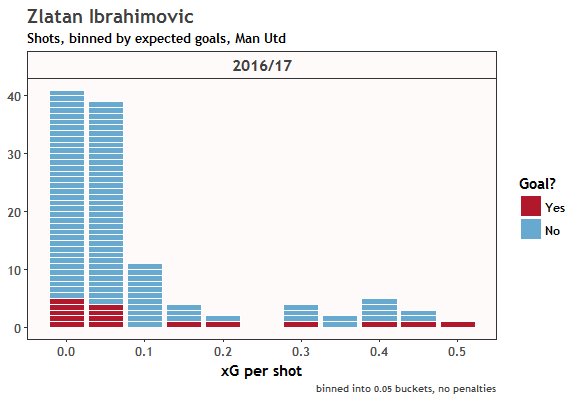
Two things. 1) Of chances below an xG value of 0.05 - or, below a 5% likelihood - he scored 5 of 41. That works out at just over 12%.
2) At the other end of the scale, he only scored 4 of 15 shots (26.67%) with an xG value of 0.3 or more. So, yes, Zlatan did miss a lot of good chances – but it was also partially, if not significantly, balanced in the bigger picture by the miniscule chances which he scored from.
This is what’s known in the biz as swings and roundabouts.
New signings
Let’s start at the back and work up.
Victor Lindelöf is more of a significant upgrade in build-up than defence. That’s not to say that he’s not an upgrade over the defensive capabilities of Face-meets-turf, Confidence-meets-rock-bottom, and Studs-meets-shins. It’s just that the gap between Lindelöf and United’s current non-Bailly options is significantly larger in the passing sphere than the defending.
Nemanja Matic has been signed in central midfield, presumably to fit alongside Ander Herrera and Paul Pogba in a midfield three. Matic was a relatively high-volume defensive guy for his first three seasons back at Chelsea, but with Kanté alongside him in 2016/17 these numbers understandably decreased (figures per 90 minutes).
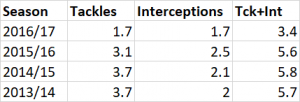
Ander Herrera, last season, made 3.1 tackles and 3 interceptions per 90 minutes, so with Matic coming in and able to play a similar role it will be interesting to see how those duties are shared. United have also played on the counter a lot during pre-season (for what that’s worth), so having two mobile play-breakers like Herrera and Matic (more mobile than Carrick, at least) could suit that style down to the ground.
At the top of the pitch, Romelu Lukaku in and Zlatan Ibrahimovic out seems like a fair swap, especially considering the change in attacking style that it seems to have allowed Mourinho to implement. Having a main man up top who can actually run for 90 minutes has led to a properly counter-attacking style to take hold, the young bucks, Rashford and Martial in particular, able to break forward in a way far more suited to them than the slow build-up they’ve had to endure in their short United careers so far. And as for converting big chances…

Look at all that sweet, sweet United red in the high-quality chances columns. Sure, Zlatan would probably have shifted that way if injury had stayed away and given him another season at United, but it’s fun to compare the difference in outcomes. Hey, if United had had Lukaku performing like this last season, maybe the narrative around them would have been much different.
Top 4 race
Let's remind ourselves of our three scenarios: conversion giving United a boost; conversion + signings giving United a boost; or neither giving United a boost.
The swings in conversion will probably give Jose's men something of a boost, though the extent of it may be small. Will the signings give United a boost? More likely than not.
If Lindelof fails to perform then he'll still likely be playing at a higher level than if Smalling, Jones, or Rojo were failing to perform; and the same rule applies for if he fits right into the side. He'll certainly improve their build-up from the back. In a similar vein, Matic in midfield allows United to stop playing a Carrick who struggles to run or a Fellaini who struggles to [lets United fans finish that sentence].
Lukaku is more of an uncertainty in that his value is purely in what he brings to the side, rather than replacing a below-par player. He's replacing Ibrahimovic, and an Ibrahimovic who defied many peoples' expectations to score goals and be a key figure in United's side. However, even if Lukaku struggles to find the net, he'll likely help bring more out of some of the other attackers in the team, which will help balance out the pros and cons. Best case scenario for Lukaku is therefore very good, while worst case scenario is still likely to be relatively good too.
Noisy neighbours City aside, United have arguably improved in personnel-terms at a better rate than any of their other Top 4 rivals. Liverpool could join them in the squad-improvement stakes if they complete the Van Dijk and/or Keita signings, but until then it's the Mancs on top.
This doesn't exactly help predict where United will finish up this season, though. City and Chelsea will be expected to be firmly in the top 4 (despite the fact that the wave of helpful conversion skews that Chelsea were riding won't last forever, their defence was still formidable). Arsenal, depending on how well the 3-4-2-1 works, might be the team most likely to miss out. Liverpool and Spurs, particularly considering the styles of play which their managers like to use, both have squad depth issues, so how they fare throughout the whole season may be dependent on injury luck. It's worth remembering too that there was just a single point between 4th and 5th place last season.
Expecting United to return to the finishes of Fergie's final days may be asking a little much, but for Mourinho he has to at least avoid the Van Gaalian combination of unentertaining football and mediocre results.
Where exactly will they finish in the current top-of-the-table climate? God knows; although even He might not be certain.
Chelsea 2017/18 Season Preview
After the madness of the 2015/16 Premier League season it appears normal service has been resumed. We head into 17/18 with Chelsea as defending champions once again, having strode to the title without really much fuss at all in the end.
Antonio Conte arrived, dug through the rubble left behind by his Portuguese predecessor, and restored the club to a spot at the top of English football. The squad Conte inherited was - despite its defective state - obviously fantastic. Nonetheless he should be applauded for reassembling them into a team with no real holes in their game. The move to a 3-4-3 was inspired and the speed with which the players adapted to it a testament to Conte's management. As was bringing Victor Moses out of the wilderness and somehow turning him into Cafu.
Any measure you want to look at, they ranked highly. The bedrock of their success being the killer combo of conceding a low amount of shots (8.5 per game, 3rd fewest in the league) + low quality of those shots. Between the 11th of December and the 25th of February they had a run where they conceded fewer than 10 shots in every match - 12 matches in total. They also made superb use of set pieces, scoring 22 goals from them, 9 goals more than any other top-6 team. Back to front they were just solid. Their defensive numbers might have been even better had they not spent the first few matches testing other formations.
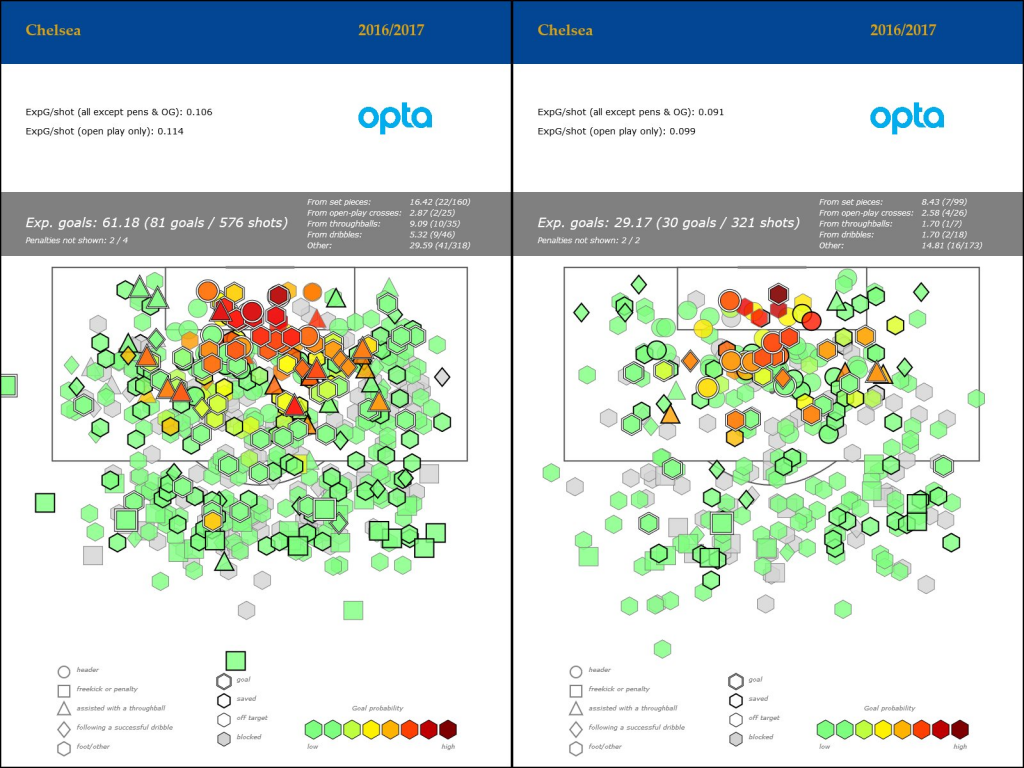
With that said, they were also fortunate in some aspects. They overshot their expected goals by a wide margin, racking up 81 non-penalty goals which was about 20 more than expected. Diego Costa was the main culprit in this, starting the season off with a ridiculously hot 14 goals in 19 matches. He cooled off, scoring just 6 goals in the final half of the season.
The rest of the team didn’t, including the highest conversion rate on shots from outside the box in the league (leading to 12 goals). As James Yorke has noted before this hot scoring was a part of them spending an unusually high amount of their game time in a winning position, never having to really chase a lead. This is also an ingredient that is common amongst title-winners of years gone by. With the margins at the very top of the league being so thin, these sorts of positive variance factors can help separate a team from the pack.
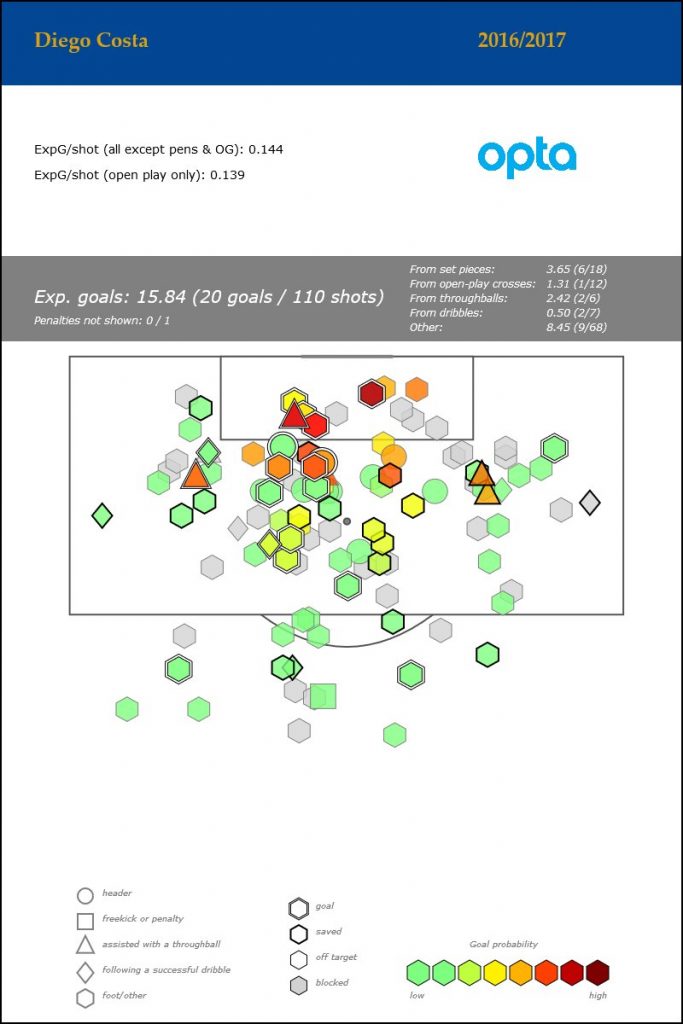
In reality though, all of this variance talk is a footnote. They were an excellent team with negligible flaws. As a result the objective for the upcoming seasons is clear: consolidate where they are and prepare for the added weight of the extra Champions League matches. They used the joint-2nd fewest players in the league last season and were mostly unfettered by injury. The squad needs fattening up.
Transfers
After three productive years Diego Costa is on the out and to replace him the club has brought in Real Madrid’s Álvaro Morata, for around £58m + vague add-ons. Morata’s production in previous seasons hints towards an impressive talent, yet it remains an opaque sample. At 24-years-old he’s never played over 1500 minutes in a league season and has never been the first choice striker on a team. 2016/17 La Liga was the first time in his career where his number of starts trumped his appearances off the bench, racking up a mind-boggling 15 goals and 4 assists in 1334 minutes.
Despite the small sample size his underlying numbers in that time are great and point to a fairly diverse range of skills. He attempted 21 headed shots (converting 6 of them), more than Costa has attempted in the last two seasons combined, and showed a penchant for creating decent shots off of dribbles, all with a skew towards the left side of the box - a preference that Costa shared. The overall shot selection is solid too with a very nice cluster (mostly headers) right in the middle of the box.
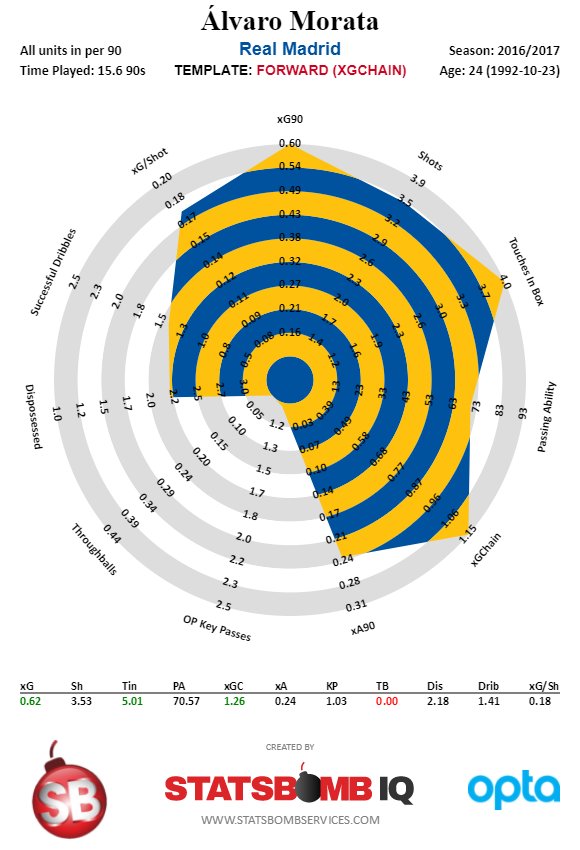
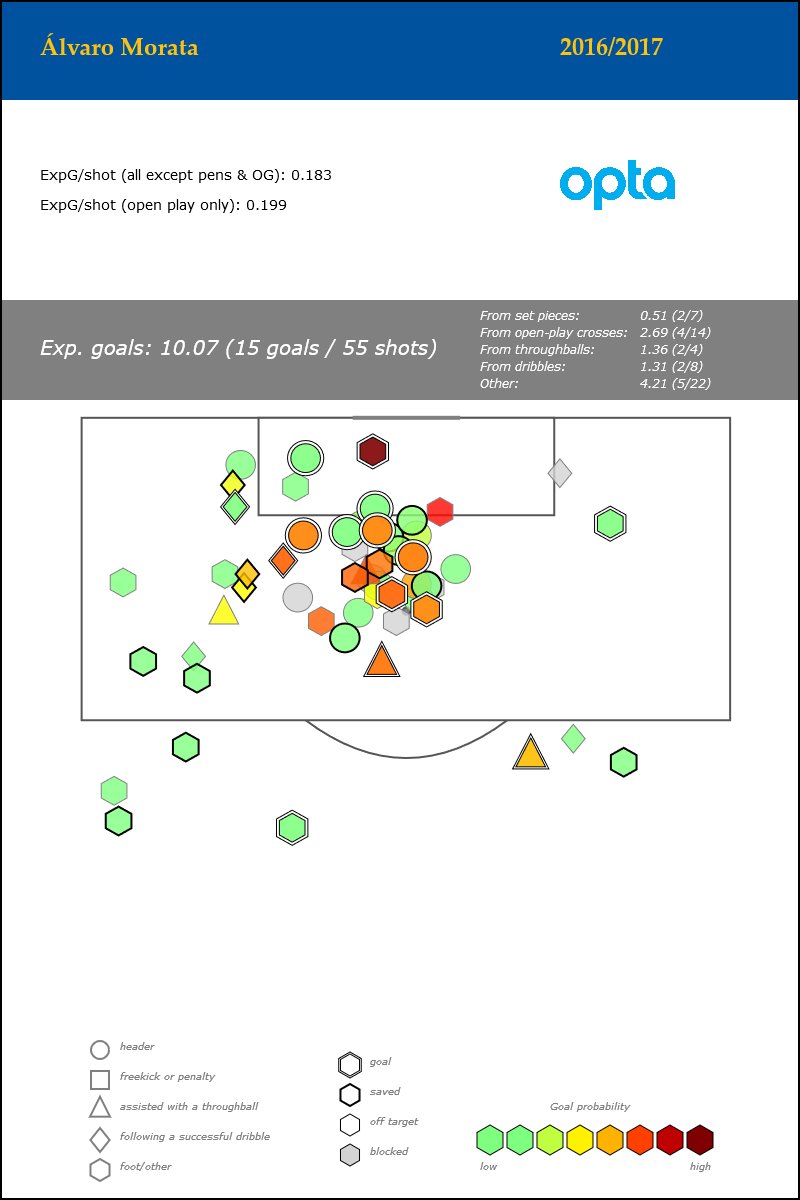
Looking back on his previous seasons, both in Madrid and in a similar role for Juventus, he’s never had a problem getting shots off. Not once has he dropped below 3 shots per90 in a league season, which includes as of late lopping off the long-rangers he once had a taste for. In fact, he’s never really had a problem with anything.
During limited minutes, season after season, he's repeatedly done everything that's been asked of him in terms of goalscoring and being a focal point at the top of European football. The question hanging over all of this though is how he’ll translate to a greater workload on a different team. Chelsea obviously have an elite set of talent but Real Madrid’s attacking firepower is as good as it gets and playing with them is likely to maximise a player's output. How much of his splendid 16-17 is down to situation? How much of it is small sample size theatre? Will Chelsea (having played the joint-third fewest crosses per game in the league last season) tailor their attack to his strengths, or will he fit into theirs?
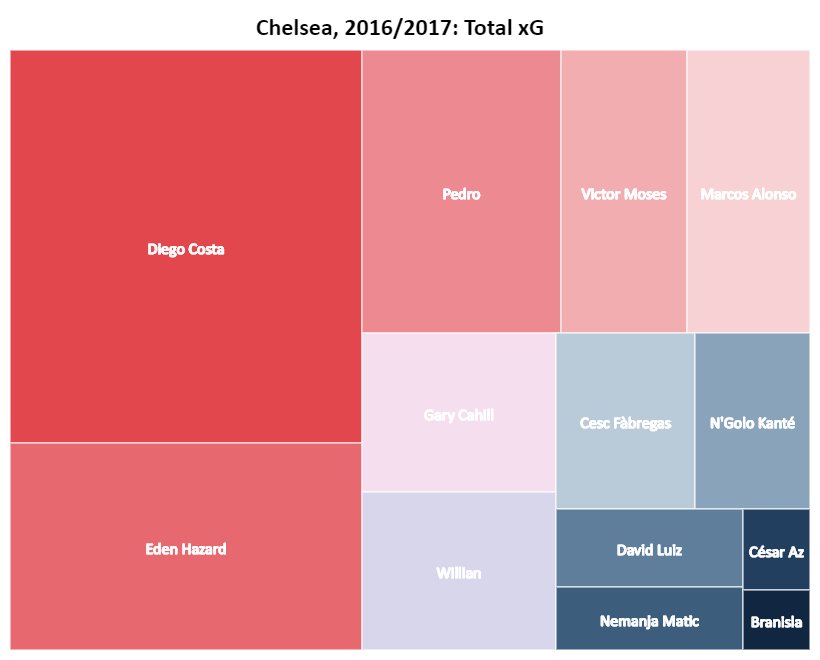
Morata is young, clearly very talented, carries no injury concerns and has a malleable enough skillset. It’s a smart gamble yet it remains a risk. One you might not expect a club in Chelsea's position to take. Brought in to bolster the midfield is 22-year-old Tiemoué Bakayoko, who spent last season at the heart of that Monaco side.
What immediately jumps out is his high number of dribbles, completing 2.16 out of a total 3.4 dribbles attempted per90 in Ligue 1 last season. That’s an unusually high number for a nominal defensive midfielder. More than both N'Golo Kanté and Nemanja Matić combined completed last season. It’s indicative of how furious an attack Monaco were that a DM was tearing through the middle of the pitch like a winger.
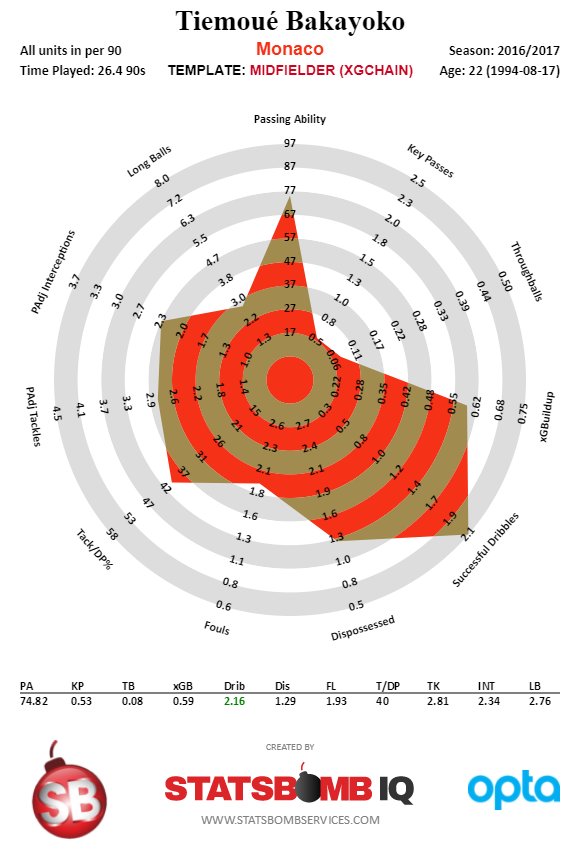
One suspects that the purpose of signing Bakayoko is twofold: to add a different option in terms of midfield ball progression and to lighten Kanté's load somewhat. While Matić’s creative contribution has stayed the same with time, his defensive activity has lowered. In the 14/15 title-winning season the Serb's defensive numbers were actually pretty Kanté-esque: a split of 2.35 Padj interceptions per90, 4.07 Padj Tackles per90 and a 43% Tackle/Dribbled past %. In 16/17 this changed to 1.70/1.89/40%. Is this age or is it the effect of playing next to Kanté? Or both?
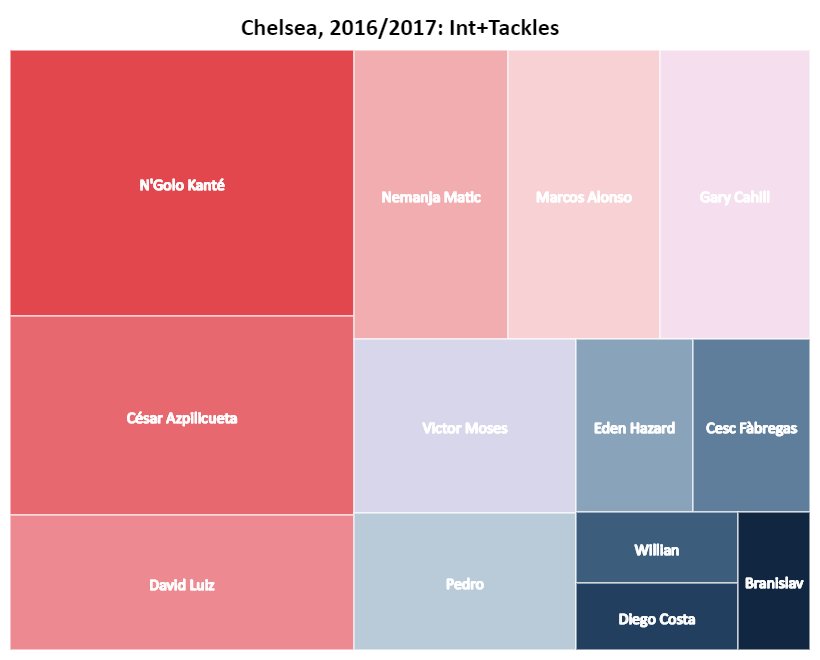
Regardless of the answer the end result is that Kanté ends up doing a lot of work. He’s sustained his energy for two full seasons now but with the addition of a Champions League campaign the workload will be greater than he's ever dealt with before. Bakayako is not the same type of defensive wizard as his compatriot, nor is he as exceptional in any one facet of the game, making the £40m fee seem a tad high. Nevertheless he's a well-rounded midfielder with time to improve who can both compliment Kanté and fill in for him against certain teams.
Having him in the fold helps ease the weight on Kanté's shoulders. However that easing is reduced now that Matić has left Chelsea to re-join José Mourinho at Manchester United, leaving the depth situation somewhat back at square one. Moving forward having a a young Bakayoko is better than having a 29-year-old Matić but it's all a bit moot if your two main midfielders are exhausted and one injury away from panic stations. Bakayoko's value as a different form of creator (a dribbler with good but not great passing ability) is also lessened when rather than an alternative he becomes the main option.
Chelsea may have to use Cesc more often or switch up the formation if they want meaningful passing in midfield, a route which of course brings its own headaches. We'll have to see what the rest of the transfer window brings on this one. Finally, slotting in at centre back, is Antonio Rüdiger. This is a quietly intriguing purchase as the German has a few quirks.
Despite being a CB he has moonlighted as a fullback on numerous occasions during his time at Roma (mainly on the right) meaning his game is a mishmash of skills. He completed 0.7 dribbles per90 for last season which, like Bakayoko, is on the high side for his position, even when you factor in the odd game at FB.
His passing numbers also are closer to David Luiz in terms of adventurousness (many an attempted long ball) than they are Gary Cahill. At 24-years-old it’s likely that his role will start out small, growing in the future as Luiz and Cahill - both in their 30s - age out of contention. Roma used him in a three-at-the-back, something Conte no doubt took note of, and his positional flexibility means he could fill in for Victor Moses too should the situation demand it. Perhaps Kurt Zouma (who has just been loaned to Stoke) could have filled that role but for now it appears Conte doesn’t consider him ready. Andreas Christensen - who impressed on loan at Borussia Mönchengladbach - has been preferred instead.
Michy
The case of Michy Batshuayi is an odd one.
Chelsea bought him last summer for around £33m off the back of a 15 open play goals(+2 pens)/9 assists season at Marseille, with some great expected goals numbers to boot. At Chelsea he has played a total of 239 league minutes, almost all of them in short cameos off the bench, with one token start in the dying embers of the season. It makes sense that he didn’t play much in the first half of the season given that Diego Costa was on a ridiculously hot run of goalscoring. Yet in the second half, when Costa regressed, he didn’t get a look in.
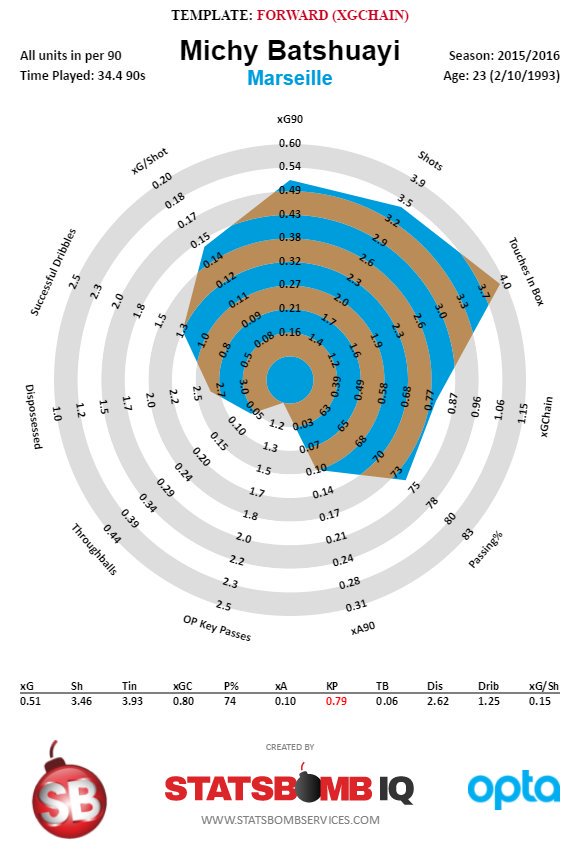
Michy for his part was also red hot in those minuscule minutes, scoring 5 goals (including the one that clinched the title) with xG output to match but it isn't clear how real that production is. At 23-years-old the club needs a bigger sample size so they can figure out what they actually have with him. If he had played more time and continued to produce then maybe the club doesn’t have to buy Morata this summer.
Instead of gambling on the young striker from elsewhere they can gamble on the young striker already on their books. Now there’s talk that he won't even be Morata’s backup, that the club is looking for an extra striker and Michy will be loaned elsewhere. We lack the context of what goes on in training and behind closed doors. Context that might illuminate why he has been handled this way. From an outsider’s perspective though, it’s confusing. Going into 2017/18 there are a few nagging concerns if you’re a Chelsea supporter.
The midfield situation will likely be solved in some fashion before the transfer window ends but others - wingback and attacking midfield particularly - are less certain. The dual broad objectives of replacing Diego Costa and filling out the squad have only been half accomplished at this point. There are slight opportunities for regression and an apprehension about how good Morata will be but these aren’t apocalyptic concerns. As things stand though, there's still a few holes to fill.
2017-18 Ligue 1 Season Preview
It’s kind of odd to write a season preview where PSG aren’t the defending champions. A lot of things had to fall in place for this to happen, mainly a certain Principality side scoring at a rate that we’ve almost never seen in the near decade’s worth of Opta data accumulated, but here we are, with Monaco having finally ended the stranglehold that PSG had for the past few seasons. They’ve fittingly spent the summer getting English teams to spend exorbitant amounts of money on their players, while the Kylian Mbappe saga rolls into August.
This season has the makings of something very interesting, in a somewhat similar way to how Premier League was looking like going into last season. While I don’t think there’s going to be a title race happening in France (unless Monaco have found the secret sauce to replicate their conversion rate, the likelihood of that being the case is zero), the other two Champions League spots could feature as much as five teams fighting for it. The five teams in question are:
- Nice
- Monaco
- Lyon
- Marseille
- Bordeaux
I can’t remember the last time Ligue 1 had potentially six teams (PSG, obviously) go into a season where the idea of making the Champions League was at the very least not preposterous. Monaco and Lyon are probably in the boat where making the Champions League is their target, and anything else is disappointing. Marseille are itching to get themselves back into the top three for the first time since 2012-13, and have spent decent amounts of money in the process (who they’ve spent it on is a whole other story). Nice and Bordeaux would like to make the top 3, but getting into the Europa League wouldn’t be the worst thing in the world either.
So this is going to be your Ligue 1 Season Preview fix for the upcoming 2017-18 season; where the five teams mentioned above get dissected along with three players to watch for during the season, and an overall wrap up on what could be an exciting season in Ligue 1.
5 into 2 won’t go:
Monaco
Stop me if you’ve heard this before, but Monaco spent their summer selling their players for a shit ton of cash. Benjamin Mendy, Tiemoue Bakayoko, and Bernardo Silva left for ridiculous sums, and there’s still a chance of Kylian Mbappe leaving for a world record fee over the next few weeks. What Monaco have done is straight out of the Football Manager playbook: overachieve during the season and let the bids pile on for players on the squad.
Perhaps the greatest compliment that could be had for Monaco is that despite the departures, there’s still a lot of talent here, including Boschilla who produced great in the limited number of minutes he had in the league last year for all that it is fair to wonder how he’ll do after coming back from an ACL injury. Allan Saint-Maxamin could be good, and the fact he wasn’t utterly rudderless at Bastia is a good sign (he is the poster boy for fine tuning shot locations among wide forwards). Thomas Lemar is still there, and he could improve with more responsibilities too. Youri Tielemans is the perfect kind of player for Monaco to buy and potentially sell off for 3x the price. If Mbappe stays, Monaco should still finish no worse than 3rd. Things get considerably more dicey if he does leave during the window.
Nice
It’s our old friend Lucien Favre, who once again told expected goal models to go kick rocks as he led Nice to a surprising 3rd place finish last season. They were aesthetically pleasing and featured one of Ligue 1’s best strikers (when healthy) in Alassane Plea, a surprisingly frisky Mario Balotelli, one of the better creative midfielders in Jean Micheal Seri, exciting fullbacks and more. And it wouldn’t be a Favre led club if they didn’t massively overachieve relative to what models projected them based on xG or even basic shot metrics.
There’s still some things to like about Nice going into this season: Seri is at the peak of his powers as a midfielder and despite massive amount of rumors, he’s still at the club. Plea is also embarking on his prime years, though after a second major knee injury, it’s fair to wonder how bad his knees are and whether he could crack 2000+ minutes in a season again. Wylian Cyprien is a big time talent, though he also has major questions since he's returning from a torn ACL. Nice won't have Ricardo Pereira, as he's back at Porto after a widely successful two-year loan spell in France. Dalbert could also be gone if the rumors of Inter sniffing him out turn out to be true. Not having one of the best fullback combos is a big blow for the club.
Going into last season, I thought that Nice would struggle quite heavily and finish in mid-table. While I don’t think that’ll happen this time if Seri stays, I would still be shocked if they finish in the top 3 for a second straight season. But hey, Favre’s consistently told shot metrics to piss off in the past, so I could be wrong again.
Lyon:
Alexandre Lacazette is finally gone after summers of rumors, they sold one of the great young midfielders in Europe to Bayern in Corentin Tolisso, and veterans like Mathieu Valbuena and Maxime Gonalons are gone too. In their place are several high upside bets like Bertrand Traore, Mariano Diaz and Ferland Mendy, to go along with some players who are much closer.
Lyon are starting in a worse off position than at the same time last year, but they still have Memphis Depay and Nabil Fekir who are two of the best attackers in Ligue 1. If one of Traore or Diaz hit, you got yourself a very dynamic attack that could hold its own with anyone outside PSG. I’m not a big fan of their manager Bruno Genesio, but there’s still enough parts remaining to be cautiously optimistic.
Marseille:
If gambling is your thing, you’ve probably noticed that Marseille in some places have the third best odds to make the top 3 in France. Name cache + new owners + money spent in the summer + top 5 finish last year; those variables in some form explain the odds trickling out in the way that they have.
The argument in favor for Marseille doing well this season goes as follow:
- Dimitri Payet will be there for a full season, and the Veledrome was where he arguably had his best season in 2014-15
- Florian Thauvin had his best season as a pro last season, and unlike Hatem Ben Arfa in 2015-16, he’s only 24 so he has a better chance of replicating that form once again
- Rudi Garcia will also be there for the start of the season, and the upgrade to him from Franck Passi is real.
Even with all those things taken into consideration, I’m very skeptical of what the club looks like. Dimitri Payet is 30 years old and there’s a good chance Marseille already had his best year as a player in 2014-15. Valere Germain is a nice enough forward although he’s turning 28. Luis Gustavo is 30, Adil Rami is turning 32 in December, Patrice Evra is 36. Marseille have created a squad where they are relying on a lot of old players doing the job for them, with youngsters like Morgan Sanson and Maxime Lopez giving them the young dynamism as a supplement. It’s not the greatest way of spending resources.
Bordeaux
I’m not saying that this will definitely be the case, but there’s a chance that Alexandre Mendy becomes one of the best value plays of the summer window across Europe. One thing to monitor with Mendy is that 47% of his minutes last season came as a sub which puts his monster shot and xG numbers into some question. It’s somewhat reminiscent of Michy Batshuayi’s first year at Marseille when he was second in command behind Andre Pierre Gignac. But even if (and probably when) his numbers take a hit, 700K for potentially a solid striker at age 23 is marvelous stuff.
I quite like this team. I liked them last year to possibly finish in the top 4, and their second half run that was influenced by changes in the makeup of their squad showed the potential that they had. Assuming reasonable health, they have the fire power to contend with players like Mendy, Francois Kamano, Diego Rolan, Gaetan Laborde. Recent history in Ligue 1 suggests that a team like Bordeaux will have it hard to finish in the top 3 unless something goes right for them (overperformance, one of their young players make the leap), but Nice did it last season and of all the teams to make a shock top 3 finish, Bordeaux probably have the squad best equipped to do so.
Bonus: Lille
I wouldn’t be doing my job here if I didn’t mention Lille, who are embarking on one of the great projects in European football. They’re bankrolled by new owner Gerard Lopez (who nearly became Marseille’s owner) who has lots of money and owns a Formula 1 team. They brought over Luis Campos, who’s the new sporting director and helped get talents like Bernardo Silva and Tiemoué Bakayoko to Monaco, and the club have spent the summer spending ~£30M on Brazilian talent. Perhaps the real story though is them hiring Marcelo Bielsa as their manager. Bielsa’s record is well known; a genius who makes teams considerably better initially, but burns bridges and leaves his clubs in a blaze of glory. Considering how much input he’s having here, this might be the one place where he doesn’t set the place on fire by year two.
It’s such a weird squad that they have currently but one that has potential to do something of note. No European football is a bonus, and Marseille in 2014-15 nearly made the top 3 that year because of that advantage. There is attacking talent there with the likes of Nicolas Pepe, Anwar El Ghazi, Nicolas De Preville. If the Brazilian contingent of Thiago Maia, Thiago Mendes and Luiz Araujo work out in some form, you’ve got the makings of something really cool happening. All things being equal, this team need a bunch of things to go their way for them to finish in the top 3 this year, and the club themselves have targeted 2018-19 as the season to finish in the CL. But exciting times are happening there, and you should make out some time in your schedule for potential Bielsa madness (both good and bad).
Three Players to Watch: Yann Karamoh:
You don’t find a lot of 18-year-old players who finish in the top 25 in a good league when it comes to xG contribution, especially when said player is reportedly available to be had at ~€10M. Karamoh wasn’t Mbappe or Ousmane Dembele; the type of supernova talent that made big clubs take notice with their wallets, but he produced decently enough on a below average side at Caen.
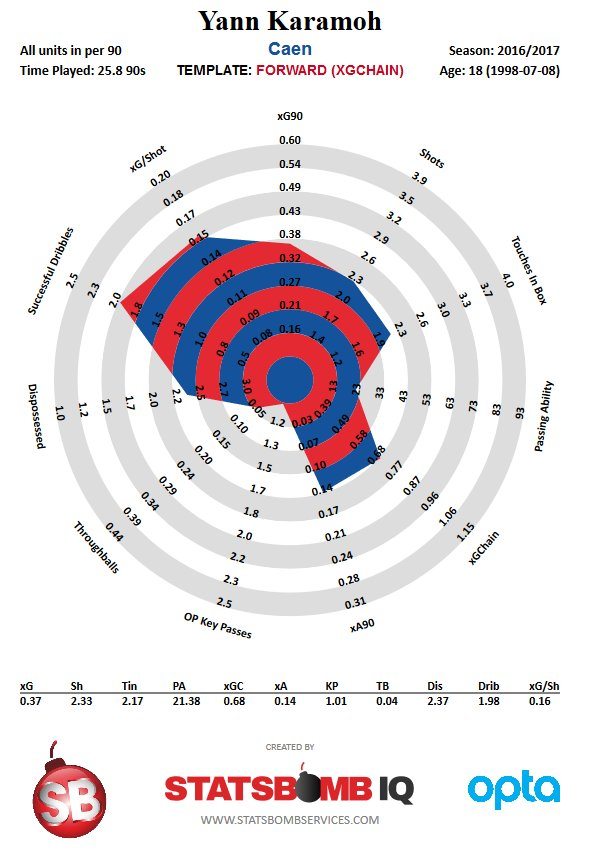
His contract runs out next year and there’s almost zero chance Caen don’t cash in on a transfer fee for him in some shape or form, whether it be now or having him sign a deal with an agreement for him to leave at a future transfer window. Regardless, the kid’s promising and it would be interesting if he did move up the division to a team like Monaco, who do have a track record of playing young players recently. He could be the next one in a long line of exciting French talents
Allan Saint-Maxamin:
I have a working theory with attacking players who play for Bastia: If you can at least not be awful, you’re probably going to grade out as a decent Ligue 1 player, and perhaps even better than that. Over the past few years, the list has been growing:
- Florian Thauvin
- Ryad Boudebouz
- Anthony Modeste
- Francois Kamano
- Wahbi Khazri
- Giovanni Sio
- Claudio Beauvue
On raw ability alone, Saint-Maxamin oozes potential. He’s got speed to burn, can dribble past anyone, and has great hair. His numbers weren’t great last year, in fact they were quite grizzly. But Bastia were terrible last year and have been bad for a while, so he could easily have just been in a bad situation for himself. Plus, at least for now he looks to be sticking with Monaco for the season and with some of the departures, he stands to get some minutes. With talented teammates and a good manager, perhaps he might create more of these opportunities on a regular basis.
Francois Kamano:
Perhaps the most intriguing of the three mentioned. Kamano took a lot of shots last season, especially from open play. In fact, the only wide players per 90 minutes to take more shots than him who played at least 900 minutes were Memphis Depay and Angel Di Maria. Unlike Memphis, whose overall statistical profile ranks him among the elite attackers in Europe, Kamano isn’t close to that. It’s not to say that he’s bad per se. His overall shot contribution (shots + key passes) rank him in the top 20 in France. Expected Goals + Assists rank him decently enough in the top 25-30 as well. He’s a fine winger who’s still young at 21 years old and probably is about two or so years from his peak.
Very much like Adam Ounas, who caught the eye well enough to land a transfer to Napoli, shot locations are what’s keeping him from getting to that next level. Simply put, Kamano takes a lot of bad shots, which hinders his overall impact as a player.
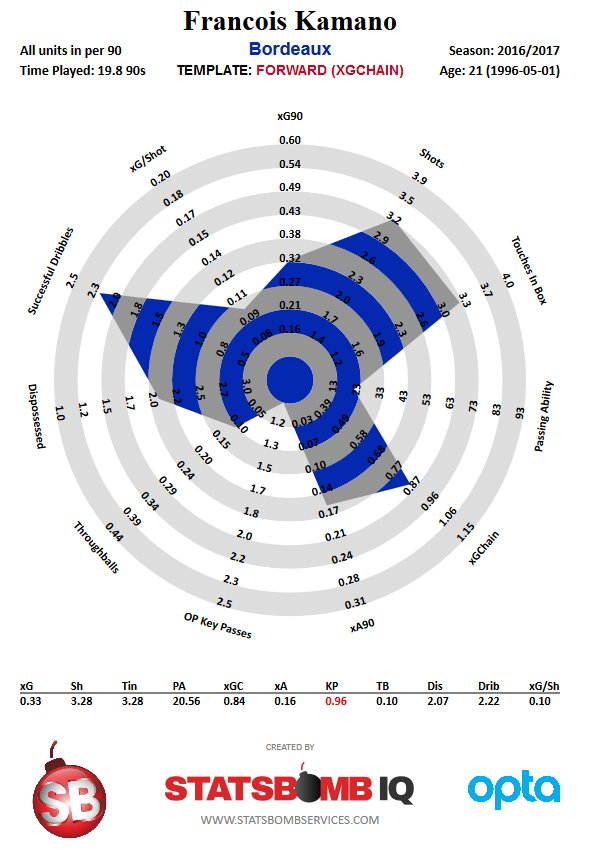
In some ways, it’s a bit reminiscent of Memphis Depay before his half season resurgence with Lyon, albeit Kamano is not nearly as all encompassing a force as Depay was at PSV. As it turned out, playing with a lot of talented attacking players was the best thing to happen for Depay, and since Bordeaux have some nice pieces in their squad, maybe Kamano could cut out some of these low-quality shots from his repertoire.
There’s potentially a very nice player here; not necessarily a world-beater, but one that could attract a serious offer from a bigger club in a future transfer window.
Final Thoughts:
2017-18 has the promise of being a fun season in Ligue 1. There’s not going to be a title race, especially if the rumors of Neymar going to PSG become finalized. However, everything below could be lots of fun: Bielsa’s back, we get a full year of Memphis + Fekir, the retirement home at Marseille trying to buck father time, the kids at Monaco that still remain.
Ligue 1 has become an attractive league over the past few years because of the volume of exciting young talents that are present and getting significant minutes, and this season doesn't seem to be any different. Players like Houssem Aouar at Lyon, Martin Terrier at Lille, and Marcus Thuram at Guingamp could all shine and become bonafide prospects. And then there's talents like Maxime Lopez at Marseille, who's only 19 years old but already looks like a genuine talent and could become a dynamite creative midfielder in the not too distant future. The faith in youngster's to make mistakes and grow from them is perhaps the greatest calling card that the league has. Find time in your schedule. Big talents of the future reside within and even if you just want to watch world stars doing their thing PSG have you covered there. It's should be a good one.
Top 6 Prediction
- PSG
- Monaco
- Lyon
- Bordeaux
- Marseille
- Lille
StatsBomb Pod: August 2017
[soundcloud url="https://api.soundcloud.com/tracks/335927930" params="auto_play=false&hide_related=false&show_comments=true&show_user=true&show_reposts=false&visual=true" width="100%" height="450" iframe="true" /] Ted Knutson and James Yorke field questions on the Neymar deal, Championship, transfers and more Downloadable on the soundcloud link and also available on iTunes, subscribe HERE Thanks!
